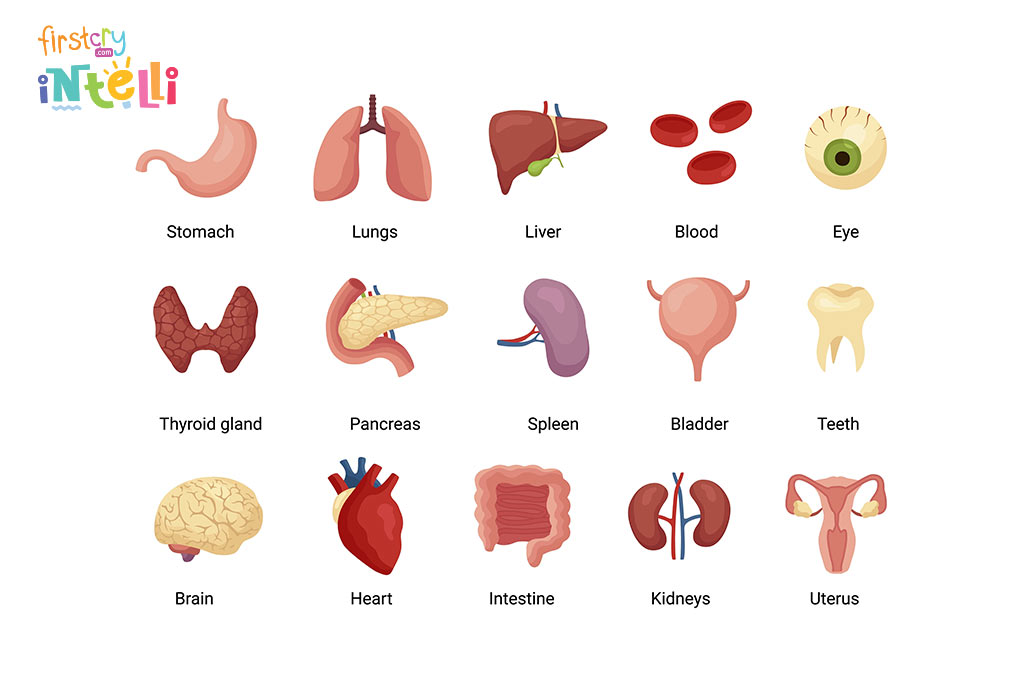Internal Clearance of a Box Truck: Mastering Your Mobile Workspace
Internal Clearance of a Box Truck: Mastering Your Mobile Workspace cars.truckstrend.com
The humble box truck, a ubiquitous sight on our roads, is the backbone of countless businesses, from local deliveries to cross-country logistics. Its utility hinges entirely on one critical factor: its internal clearance. Often overlooked until a problem arises, the internal clearance of a box truck isn’t just about how much "space" there is; it’s about the usable space, the dimensions that dictate what you can carry, how efficiently you can load it, and ultimately, how profitable your operations will be.
This comprehensive guide will delve into every facet of internal clearance, demystifying its measurements, highlighting its profound importance, and offering actionable insights to help you optimize your box truck for maximum efficiency, safety, and profitability. Understanding this crucial dimension is not merely a technicality; it’s a strategic advantage.
Internal Clearance of a Box Truck: Mastering Your Mobile Workspace
Understanding the Dimensions of Internal Clearance
Internal clearance refers to the maximum unobstructed dimensions within the cargo area of a box truck. It’s the true, practical space available for your goods, taking into account all internal structures and design elements. While a truck’s external dimensions are readily available, its internal clearance requires a more meticulous assessment.
The primary dimensions to consider are:
- Internal Height (Usable Height): This is the vertical distance from the cargo floor to the lowest point of the ceiling or any overhead obstruction. This could be roof bows, interior lighting fixtures, HVAC components, or even the thickness of insulation panels. This dimension is crucial for stacking cargo, accommodating tall items, and ensuring pallet jack or forklift maneuverability if applicable.
- Internal Width (Usable Width): This measures the horizontal distance between the interior walls at their narrowest point. Critically, this often includes obstructions like wheel wells, E-track or logistics posts, and interior wall liners. It dictates how many pallets can fit side-by-side or the maximum width of single items.
- Internal Length (Usable Length): This is the horizontal distance from the front bulkhead (the wall separating the cab from the cargo area) to the rear door opening. It determines the maximum length of items or the total volume capacity in conjunction with height and width.
- Rear Door Opening Dimensions: Often overlooked, the rear door opening (height and width) is almost always smaller than the internal dimensions of the cargo box itself. This is a critical choke point for loading and unloading, especially for wide or tall items like palletized goods. You might have ample space inside, but if it can’t fit through the door, it’s irrelevant.
- Wheel Well Intrusion: On most standard box trucks, the rear wheels protrude into the cargo area, creating significant obstructions. These wheel wells reduce both the usable width and, in some cases, the effective height over a specific portion of the floor. This is a major consideration for pallet placement and wider cargo.

Recognizing these nuances is the first step towards truly leveraging your truck’s capacity.
Why Internal Clearance Matters: Benefits and Importance
The impact of understanding and optimizing your box truck’s internal clearance ripples through every aspect of your operation.
- Cargo Protection and Damage Prevention: Knowing your exact clearance prevents goods from being crushed, scraped, or damaged due to insufficient space. Over-stuffing can lead to costly returns, repairs, and dissatisfied customers.
- Maximizing Payload and Efficiency: Every inch of usable space translates to cubic feet. By accurately assessing clearance, you can plan your loads to utilize every available dimension, potentially reducing the number of trips required and saving on fuel, labor, and vehicle wear.
- Enhanced Safety: Proper internal clearance ensures cargo can be loaded and secured without forcing. This prevents shifting during transit, which can lead to instability, accidents, and injuries to drivers or loading personnel. Compliance with weight distribution and load securement regulations is also easier.
- Operational Streamlining: When you know what fits and where, loading and unloading become faster and more efficient. Less time is spent adjusting, repositioning, or wrestling with cargo that’s "just a bit too big."
- Cost Savings and Profitability: This is where it all comes together. Reduced damage claims, fewer trips, optimized fuel consumption, and improved safety all contribute directly to your bottom line. An efficiently utilized truck is a more profitable truck.
- Strategic Planning and Procurement: Accurate internal clearance data informs future truck purchases or leases. You can specify the exact dimensions you need, avoiding the costly mistake of acquiring a truck that’s either too small or unnecessarily large for your typical cargo.
Measuring Internal Clearance: A Practical Guide
Accurate measurement is paramount. Don’t rely solely on manufacturer specifications, as these often represent "shell" dimensions before insulation, liners, or other fixtures are added.
Tools You’ll Need:
- Tape Measure: A long, retractable tape measure (25-50 feet) is essential.
- Laser Distance Measurer (Optional but Recommended): Provides quick, highly accurate readings, especially for height.
- Level: To ensure your measurements are truly horizontal or vertical.
- Flashlight: To illuminate dark corners and identify obstructions.
- Notebook and Pen/Pencil: To meticulously record all measurements.
- Camera (Phone): To take photos of obstructions or specific areas for reference.
Step-by-Step Measurement Process:
- Empty the Truck: Ensure the cargo area is completely empty and clean of any debris that could affect measurements.
- Measure Internal Height:
- Start at the front bulkhead, measure from the floor to the lowest overhead point (e.g., roof bow, light fixture).
- Repeat this measurement at the middle and rear of the truck.
- Crucial: Pay close attention to any specific obstructions like vents, ceiling-mounted E-track, or HVAC units. The lowest point anywhere in the cargo area is your true usable height.
- Measure Internal Width:
- Measure from wall to wall at multiple points:
- Above Wheel Wells: This will likely be your widest point.
- Between Wheel Wells: This will be your narrowest point due to the intrusion of the wheel wells. Note the width of the wheel wells themselves.
- At E-Track/Logistics Posts: If present, measure from the inside of one E-track rail to the inside of the opposing rail to get the effective usable width for securing cargo.
- Record the minimum width encountered throughout the length of the truck.
- Measure from wall to wall at multiple points:
- Measure Internal Length:
- Measure from the inside of the front bulkhead to the inside of the closed rear door.
- Be mindful of any interior steps or indentations at the front that might reduce effective length.
- Measure Rear Door Opening:
- Door Height: Measure from the floor of the truck bed to the lowest point of the door frame when fully open.
- Door Width: Measure the horizontal distance between the door frame uprights when fully open.
- Document All Obstructions: Note the location and dimensions of any permanent fixtures that reduce usable space, such as:
- Roof bows
- Interior lighting
- Vents or fans
- E-track or logistics posts (and their protrusion)
- Wheel wells (their height, length, and how much they reduce width)
- Any shelving or custom installations.
Tips for Accuracy:
- Always measure from a consistent, flat surface (the floor).
- Take multiple measurements in different spots to account for minor variations.
- Record your findings clearly, perhaps even sketching a simple diagram of the truck’s interior with dimensions noted.
Factors Affecting Usable Internal Clearance
Beyond the basic measurements, several design and feature choices significantly impact the actual usable space:
- Truck Body Construction:
- FRP (Fiber Reinforced Plastic) vs. Aluminum: FRP bodies often have thicker walls due to their composite construction, which can slightly reduce internal width compared to some aluminum bodies.
- Insulation: Insulated bodies, common for temperature-controlled cargo, will have thicker walls, floors, and ceilings, significantly reducing internal clearance.
- Floor Type: While most floors are relatively thin, specialized reinforced floors or those with non-slip coatings generally don’t impact clearance much, but uneven floors could.
- Roof Bows & Liners: These structural components are frequently the lowest point of the ceiling, dictating maximum internal height.
- Wheel Wells: As discussed, these are the primary culprits for reducing usable width and sometimes height over a specific area. Their size varies by truck chassis and tire size.
- E-track/Logistics Posts: While invaluable for cargo securement, surface-mounted E-track systems protrude from the walls, reducing the effective internal width available for wider items or pallets. Recessed E-track systems offer a solution but are less common.
- Internal Lighting, Vents, HVAC Units: Any fixtures mounted on the ceiling or walls will consume precious inches of internal clearance.
- Customizations: Permanently installed shelving, toolboxes, or specialized equipment will inherently reduce the general-purpose internal clearance.
Optimizing Internal Clearance: Tips and Solutions
Knowing your clearance is one thing; making the most of it is another.
- Strategic Load Planning: Before loading, create a detailed plan based on your cargo’s dimensions and your truck’s actual usable clearance. Prioritize placement for items that require specific height or width.
- Pallet Selection: If using pallets, understand that standard pallet sizes (e.g., 48"x40" for North America) are often tight fits. Consider if smaller, custom, or stackable pallets could improve utilization.
- Packaging Optimization: Work with suppliers to minimize excess packaging. Even an inch of wasted space on thousands of items adds up.
- Utilizing Vertical Space: Stackable containers, bins, or even modular shelving systems can help utilize full internal height, provided the cargo is suitable for stacking and secured properly.
- Proper Cargo Securement: Use straps, load bars, E-track, and dunnage to prevent cargo shifting. Secure cargo tightly to the walls or floor to maximize stability and prevent items from encroaching on valuable space during transit.
- Consider a Larger Truck (If Necessary): If your current truck consistently struggles with clearance issues, it might be more cost-effective in the long run to invest in a larger truck that provides adequate space.
- Body Modifications (Long-Term/Expensive): For specific needs, some companies offer modifications like recessed E-track or custom wheel well covers that aim to reclaim marginal space, but these are significant investments.
Challenges and Pitfalls
Ignoring internal clearance can lead to several costly mistakes:
- Underestimating Obstructions: Failing to account for roof bows, E-track, or light fixtures as part of the "usable" space.
- Assuming Door Clearance Equals Internal Clearance: This is a common and costly error, especially for palletized goods.
- Ignoring Weight Distribution: While not directly a clearance issue, improper weight distribution can cause cargo to shift, effectively reducing usable space or leading to damage.
- Damage from Forcing Fit: Attempting to force oversized items into too-small spaces can result in damaged goods, damaged truck interiors, and increased maintenance costs.
- Buying the Wrong Truck: Purchasing a truck based solely on advertised "internal dimensions" without verifying actual usable clearance can lead to perpetual operational inefficiencies and frustration.
Investment in Optimal Internal Clearance
Internal clearance itself isn’t a commodity you buy, but achieving optimal internal clearance for your needs involves various investments and has significant cost implications.
| Aspect of Internal Clearance | Description of Cost Implication | Typical Investment Range (Highly Variable) |
|---|---|---|
| Initial Truck Purchase/Lease | Larger trucks or those with specialized body designs (e.g., thin-wall construction, low-profile chassis to minimize wheel well intrusion) generally cost more. | New Truck: $40,000 – $100,000+ Used Truck: $15,000 – $60,000+ |
| Body Type & Construction | Insulated bodies (for temperature control) are more expensive but reduce internal clearance. Specialized lightweight or thin-wall bodies might offer slightly more space but come at a premium. | Insulated Body Add-on: $5,000 – $20,000+ |
| Interior Features/Customizations | Recessed E-track (vs. surface-mounted) for maximizing width, specialized interior liners, or custom shelving for specific cargo. | Recessed E-track: $500 – $2,000 per wall Custom Shelving: $1,000 – $10,000+ |
| Measurement Tools | Investing in accurate tools to measure and verify internal clearance. | Tape Measure: $20 – $50 Laser Measurer: $50 – $300 |
| Cargo Securement Equipment | Straps, load bars, dunnage, etc., which allow for safer, more efficient use of the measured clearance. | Ongoing Cost: $100 – $1,000+ (initial + replacements) |
| Cost of Inefficient Clearance (Hidden Costs) | Damaged Goods: Cost of replacement, reputation damage. Wasted Trips: Fuel, labor, vehicle wear. Downtime: For repairs or re-loading. Legal Penalties: For unsafe loading. |
Significant, potentially tens of thousands annually depending on scale. |
| Training & SOPs | Training staff on proper measurement, load planning, and securement techniques to fully utilize internal clearance. | Internal Training: Time & Resources External Courses: $100 – $500 per person |
Note: The investment ranges provided are extremely broad and subject to significant fluctuation based on truck size, manufacturer, new vs. used condition, specific features, labor costs, and market conditions.
Frequently Asked Questions (FAQ)
Q1: Is the rear door opening always smaller than the internal width and height?
A: Almost always, yes. The door frame, hinges, and sealing mechanisms typically reduce the effective opening compared to the interior dimensions of the cargo box. Always measure the door opening separately.
Q2: Do wheel wells always intrude into the cargo space of a box truck?
A: On most standard box trucks, yes, the rear wheel wells will intrude into the cargo area. This is because the chassis and drivetrain components sit below the cargo floor. Some specialized low-profile or "walk-through" designs may minimize or eliminate this intrusion, but they are less common and often more expensive.
Q3: How do I measure internal height accurately, especially with roof bows?
A: Measure from the flat cargo floor directly up to the lowest point of any overhead obstruction. This is usually the bottom edge of a roof bow, but could also be a light fixture or vent. Take measurements at multiple points along the length and width of the truck to find the absolute minimum.
Q4: Can I increase my truck’s internal clearance after purchasing it?
A: Significant increases are generally not practical or cost-effective. Minor gains might be achieved by removing non-essential interior fixtures (like old shelving), but structural elements like roof bows or wheel wells are permanent. For major clearance needs, it’s almost always better to purchase a truck with the required dimensions initially.
Q5: What’s the biggest mistake people make regarding internal clearance?
A: The most common mistake is assuming that advertised specifications or generic measurements represent the actual usable space. Failing to account for obstructions like wheel wells, E-track, and especially the smaller rear door opening leads to constant loading challenges and potential cargo damage.
Conclusion
The internal clearance of a box truck is far more than just a measurement; it’s a fundamental determinant of your operational efficiency, safety, and profitability. By thoroughly understanding its various dimensions, meticulously measuring your specific truck, and strategically planning your loads, you unlock the full potential of your mobile workspace.
Investing time in this seemingly small detail yields significant returns, from preventing costly cargo damage and reducing fuel consumption to enhancing safety and streamlining your logistics. Treat your truck’s internal clearance not as a fixed constraint, but as a critical asset to be understood, optimized, and leveraged for success. In the world of logistics, every inch counts, and mastering your internal clearance is key to making every mile count.





